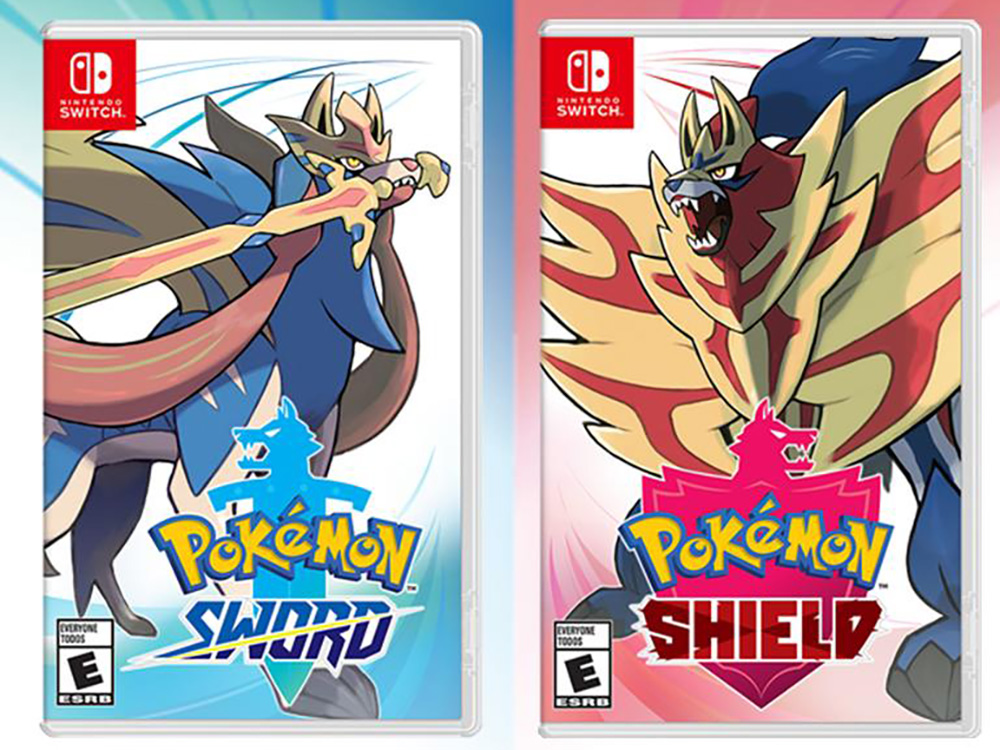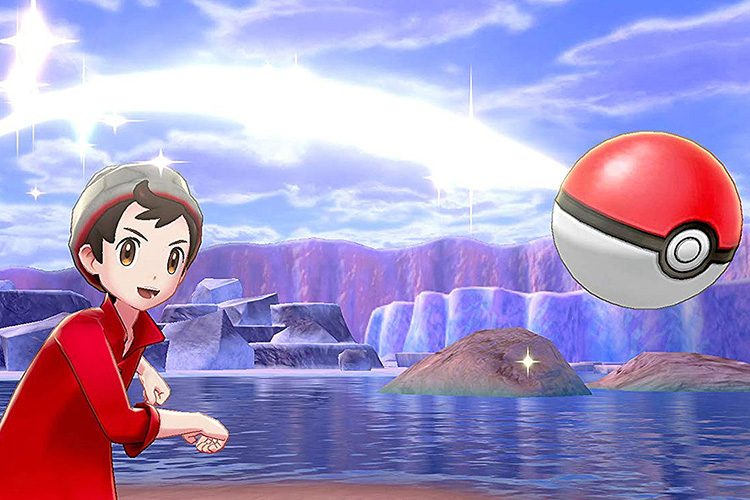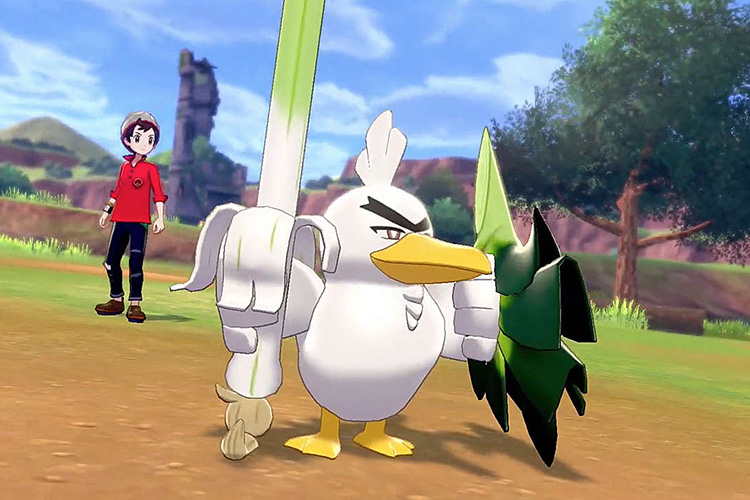The eight strongest trainers in my entire country have opened their stadium doors to me, eager to accept my challenge for the title of champion. A mysterious ancient mystery seems to have reared its ugly head again, the clues scattered around waiting to be found. My rival is training hard, hoping to match up against me the next time we run into each other on our respective quests. And me? Well, I’m exactly where I want to be–sprinting blindly through a sandstorm wordlessly screaming “GENGAR? WHERE’S GENGAR?” It’s Pokémon, baby, and everything is exactly as it should be.
Pokémon Sword and Pokémon Shield mark the eighth generation of Game Freak’s ever-expanding pocket monster universe, and the first original title developed for the Nintendo Switch following the release last November of Pokemon: Let’s Go, Eevee! and Pokemon: Let’s Go, Pikachu! Sword and Shield walk a dangerous path: As the newest entry in one of Nintendo’s most cherished (and protected) franchises, the pressure of fan expectations was set to the max well before the game was even announced. And while the inability to catch every Pokémon in the series’ history (the annoyingly well-named “Dexit”) might turn off some of the hardcore fans and the straightforwardness of the storyline and ease of progression might easily bore some newcomers, Sword and Shield are essential to the series for doing something almost distressingly simple: putting the Pokémon first.
The story of the games won’t be terribly unfamiliar to anyone who has played a Pokémon game before: A youngster leaves home to seek greatness and entrap many horrifying monsters and force them to fight each other along the way. In a nod to the teen angst at the core of the Pokémon story, and for my own personal amusement, I named my central character “Lady Bird.” In MY Pokémon Sword, Lady Bird, fed up with her mother always hounding her to go to Pokémon community college, leaves home to take on the Pokémon Championship and make out with Timothée Chalamet or something — I don’t know, the metaphor didn’t hold up very well beyond the opening moments.
My point is this: The story is not why you’re here. While there are aspects to it that are new and inviting — the newly competitive aspect of Pokémon gyms being part of a national sports pastime, the surprisingly in-depth and impactful self-doubt of your rival, and the charming but truly confusing Britishism of it all — at one point, a character exclaims, “Eh wot?” for seemingly no reason — the core tenets are the same. You find Pokémon, you catch them, you train them, you catch more of them, you win with them, the end. One could argue — convincingly, I might add — that it might be time for some bold developer to give Pokémon the Breath of the Wild treatment and blow up its world in a way that feels new and exciting. But hey! Not me! No, no; for me, it’s not about the destination, it’s about the journey. And rarely has the journey in a Pokémon game been so fun.
There are several new features in both Sword and Shield that, while not earth-shattering, do mark significant leaps and bounds in the Pokémon experience. The largest, both experience-wise and physically speaking, is the inclusion of the Wild Area. A massive expanse in the middle of the game map that spans multiple environments and weather patterns, the wild area is a masterstroke. It is where the majority of wild Pokémon can be found in the game — no matter where else you go, you’ll find yourself returning again and again. Its scope and variety are beautifully rendered: It feels expansive in a simultaneously intimidating and exciting way. While I would leave from time to time to move the game’s main story ahead, I would always make my way back for long stretches of Pokémon hunting in the Wild Area. And the game rewards you for doing so; certain Pokémon will be too powerful for you to catch early on, and simply sit there, enticing you into engaging — and then wiping out your entire party. Coming back later with a few new badges always meant new Pokémon to find–even now, long after I’ve completed the main game, I’m still enjoying seeing what new weather brings to the wild area. Its inclusion in the game has brought something entirely new to the Pokémon experience: the thrill of exploration. After so many years of a very clear progression point from gym to gym and area to area, the Wild Area is the best thing to happen to Pokémon in a long time.
The other changes are slightly less revolutionary, but they still have significant impacts on the game. One is a carryover from an idea test-run in Pokemon: Let’s Go, Eevee! and Pokemon: Let’s Go, Pikachu! As you move around the world now, Pokémon are visible. Random run-ins in the grass are no longer a requirement of the game. There is, however, one clever update from Let’s Go: While you see most Pokémon in the overworld, you can still have random encounters in the grass, and these random encounters can be Pokémon that you can’t actually see anywhere around you. This hybrid approach — the removal of some randomness with the maintaining of some surprise — solves a lot of the headaches of grinding for random Pokémon. It also injects some unexpected humor into the proceedings: Pokémon can see you, too, and some will give chase once they’ve spotted you.
Remember when I said the Wild Area features Pokémon too strong for your party to take? Well, that’s one thing. When a giant ice bear that out-levels you by 35 is lumbering after you across a field? That’s a whole other thing. Lord knows that Pokémon already has its hands in enough cookie jars, but if they ever wanted to add “survival horror concept” to their genre pool, well, I can see the avenue there.
The third, and perhaps least-successful significant new mechanic, is the concept of “dynamaxing,” a dramatic sequence that supersizes Pokémon and gives them new, more powerful move bases. As its name suggests, it is dynamic: There is an undeniable appeal to watching stadium-size Pokémon duel it out in an arena. But the novelty of the move wears off once it’s been repeated several times, and the move set is rarely necessary. If you’re leveled high enough, you can still blast through the gym leader’s dynamaxes with ease. Where it shines most is in two places. One is in what are called “Max Raids:” four-on-one fights in which four trainers take on a super-powerful wild Pokémon, with the chance to catch it once you’ve taken it down. These battles can feel truly epic. When you run into higher-level Pokémon, the coordination with your fellow trainers — who you can team up with through online connection — becomes essential. The second is in the few Pokémon who can “Gigantamax,” which is a special dynamax form that changes a Pokémon’s appearance entirely instead of just making it larger. Which is great because, like, come on. … They’re CRAZY! One Gigantamax Pokémon turns into a giant cake! One turns into a straight-up building! That’s so fun!
These changes, and others including shared EXP and candies that give your Pokémon large amounts of experience points, may seem like they cheapen the experience — and for some users, they might. But I found that all of the changes were centered around accentuating two key parts of the Pokémon experience: catching as many Pokémon as possible and making them stronger as fast as you can. In this way, my Pokémon experience felt subtly shifted, while I often feel shepherded along to make it to the finish line as quickly as possible, Sword and Shield made me appreciate taking my time.
In my review of Pokemon: Let’s Go, Eevee!, I said that I felt little compulsion to continue playing the game after the main storyline was completed. Not so here: Pokémon Sword and Pokémon Shield have created a rich and slowly unfolding world that inspires you to continue exploring its reaches — long after you’ve become its champion.
Sword and Shield feel like an important step forward for a franchise that has always made its progress in fits and starts. While it’s hard to call the game truly revolutionary — even without all of the Pokémon, it carries over too much from previous generations to earn that title — the toying with form and scale suggests a franchise still willing to reinvent itself. In the coming weeks and months, as the online mode begins to stabilize and a competitive format begins to take shape, the game will continue to grow, and the suggestion of hidden Pokémon being saved for max raid events down the line means that there might still be secrets to uncover.
Well, that’s all well and good: In the meantime, if you need me, I’ll be frantically paddling around this lake, screaming “LAPRAS? LAPRAS?” over and over again. What can I say? Lady Bird tends to the dramatic.
Photos: Pokémon Co., GameSpot, Engadget




